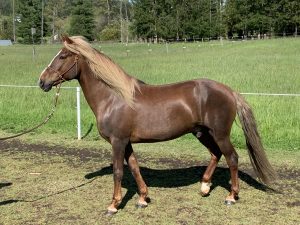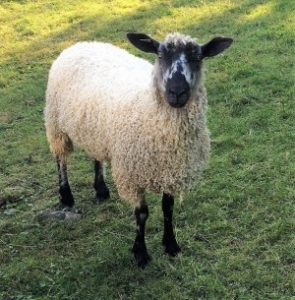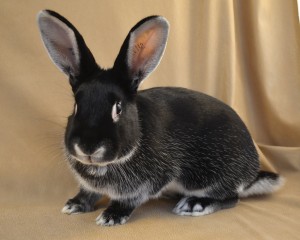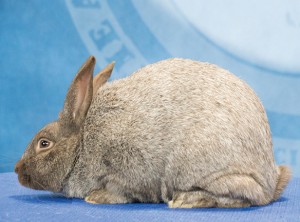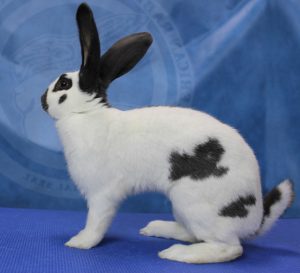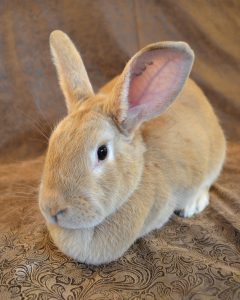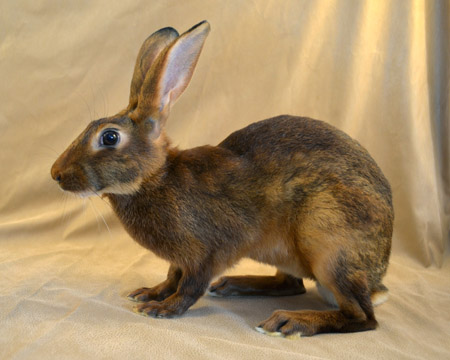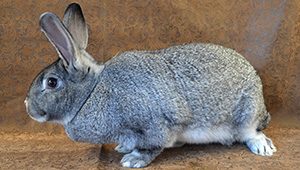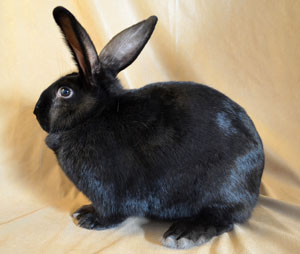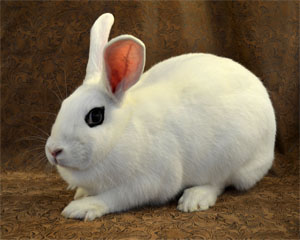FOR IMMEDIATE RELEASE
Contact: Brittany Sweeney
bsweeney@LivestockConservancy.org
(919) 542-5704
International #HeritageBreedsWeek celebrates global conservation efforts
Pittsboro, N.C. [May 12, 2020] – Heritage breed farm animals and the genetics they possess are not only living time capsules from our past; they represent the key to our future as we are forced to adapt to a world that is changing at a rate not seen in previous generations. According to the Summary for Policymakers of the Global Assessment Report on Biodiversity and Ecosystem Services, released in 2019, the future of biodiversity in animal agriculture is in jeopardy. That’s still true in 2020.
To organize and target conservation efforts for more than 150 endangered livestock and poultry breeds at risk in the United States, The Livestock Conservancy compiles a Conservation Priority List. This year, the organization added eight more breeds to the list, including two horse, one sheep and five rabbit breeds. The ranked list of heritage livestock and poultry breeds is based upon the annual number of registrations in the United States and the breed’s estimated global population size.
New to the Conservation Priority List this year:
- The Puerto Rican Paso Fino, listed as Threatened, is an old breed of gaited horse important throughout the Americas.
- Brabant horses, listed as Study, are an important heavy draft breed from Belgium.
- Teeswater sheep, listed as Critical, are common among longwool sheep breeds, but their low global numbers mean American breeders contribute to the breed’s international survival.
- Silver Marten rabbits, listed as Critical, first appeared in the 1920s with their unusual color pattern. These gentle rabbits have a black top color with white under the chin, belly and tail, inside the ears and nostrils and delicately rimmed eye circles.
- Argent Brun rabbits, listed as Threatened, disappeared in the early 20th century, but were revitalized in the early 1940s. They are friendly, with a stunning silver frosted brown coat.
- Checkered Giant rabbits, listed as Threatened, were introduced to the U.S. in 1910. Also known as the Giant Papillon, they have a distinctive butterfly shaped marking.
- Standard Chinchilla rabbits, listed as Threatened, arrived in America in 1923 as the smallest of the Chinchilla breeds. They strongly resemble the South American Chinchilla, which is not a rabbit species.
- Palomino rabbits, listed as Watch, are also known as The American Beige or Washingtonians. They are either pearl gray with diluted orange-beige or golden brown.
Rabbits are an important beginner animal for many heritage livestock breeders. During the past year rabbit breeds were more deeply investigated, which lead to many changes on our Conservation Priority List, including moves between categories:
- Belgian Hare and Silver Fox rabbits made the biggest change, graduating from Threatened to Recovering.
- American and American Chinchilla rabbits graduated from Threatened to Watch.
- Beveren rabbits graduated from Watch to Recovering.
- Crème d’Argent rabbits moved from Recovering to Threatened.
- Blanc de Hotot and Silver rabbits moved from Threatened to Critical.
Another notable move on the Conservation Priority List this year is the Large Black pig breed, which fell from Threatened to Critical after a detailed census of registrations. This international breed is endangered in all countries where it’s found.
International Heritage Breeds Week, May 17-23, 2020
To raise awareness for endangered livestock listed on the Conservation Priority List and around the world, The Livestock Conservancy and its global partners participate in International Heritage Breeds Week. During the third full week of May each year these organizations, associations, farmers, ranchers, shepherds, consumers and the public share stories about how heritage breeds have impacted their lives, environments, and local economies.
“We need more people raising heritage breeds, but we also need a larger market for their products” said Alison Martin, executive director of The Livestock Conservancy. “It may seem counterintuitive, but in many cases, that means eating them in order to save them. Purchasing heritage breed food and fiber products gives farmers an incentive to breed more animals, which will eventually help them graduate from the Conservation Priority List.”
Heritage breeds, with their wide variety of traits carefully crafted by generations of farmer-scientists and shaped by the natural world, have the ability to adapt and continue the journey they have taken with humans for millennia. They were bred for a specific purpose and by raising awareness, we are giving them their jobs back, whether that’s sport, fiber, meat, milk—or even conservation grazing. Giving breeds a purpose, and careful management and promotion by active, engaged breed associations, are the keys to successful conservation efforts for rare and endangered livestock.
According to the Intergovernmental Science-Policy Platform on Biodiversity and Ecosystem Services (IPBES) findings in 2016, more than 9 percent of domesticated breeds of mammals used for food and agriculture had become extinct and at least 1,000 more are threatened with extinction. The State of the World’s Biodiversity for Food and Agriculture report predicts that at least 26 percent of the world’s local breeds of livestock are currently at risk and only 7 percent of breeds worldwide are secure. The status of the remaining 67 percent of breeds is unknown because of a lack of data and established conservation programs. Most of the extinctions and population declines in our farm animals occurred after the year 1900.
Once a breed goes extinct, its genetics are lost to history – genetics that farmers may need in the future to combat outbreaks of disease, a changing climate, or genetic issues that arise from livestock being too closely related to each other. According to the Food and Agriculture Organization of the United Nations, one domesticated livestock breed is lost every month.
In more developed areas of the world, agriculture has shifted to using a small handful of highly uniform and productive breeds designed to maximize output of agricultural products. Many once-popular breeds representing the majority of genetic diversity within a species have now become rare. In the developing world and in many indigenous communities, some farmers see the successful production rates of modern breeds as a reason to abandon their locally adapted, but less productive animals, in favor of importing breeds from other countries. While in some cases these farmers may see short-term increases in production, they may be abandoning the very genetics that will be crucial to their ability to continue to farm in their regions. These genetics may also be important to other geographic areas as their climates and the needs of their communities change. If lost, we may not have the ability to adapt animal agriculture for our future needs.
“Just because a breed is the most productive, doesn’t mean that it should be the only breed raised,” Martin said. “We know that diversity in agriculture brings strength and adaptability in an ever-changing climate. Many heritage breeds retain traits like natural immunity, drought tolerance, easy birthing, flavor, and mothering and foraging instincts that we may need to utilize in the future.”
To learn more about International Heritage Breeds Week May 17-23, 2020, how you can get involved, and where to locate heritage breed products in your local area, visit www.HeritageBreedsWeek.org and follow #HeritageBreedsWeek on social media.
###
About the Livestock Conservancy:
The Livestock Conservancy is America’s leading organization working to protect over 150 heritage breeds of livestock and poultry from extinction. Included in its mission are: donkeys, cattle, goats, horses, sheep, pigs, rabbits, chickens, ducks, geese and turkeys. Founded in 1977, the Conservancy is the pioneer organization in the U.S. working to conserve historic breeds and genetic diversity in livestock. The Livestock Conservancy’s mission is “to protect endangered livestock and poultry breeds from extinction.”
Why is genetic diversity important?
Like all ecological systems, agriculture depends on genetic diversity to adapt to an ever-changing environment. Genetic diversity in domestic animals is revealed in distinct breeds, each with different characteristics and uses.
Traditional, historic breeds retain essential attributes for survival and self-sufficiency – fertility, foraging ability, longevity, maternal instincts, ability to mate naturally, and resistance to disease and parasites. As agriculture changes, this genetic diversity may be needed for a broad range of uses and opportunities. Once lost, genetic diversity is gone forever.
What Are Heritage Breeds?
Heritage breeds are traditional livestock breeds that were raised by our forefathers. These are the breeds of a bygone era, before industrial agriculture became a mainstream practice. These breeds were carefully selected and bred over time to develop traits that made them well-adapted to the local environment and they thrived under farming practices and cultural conditions that are very different from those found in modern agriculture.
Heritage animals once roamed the pastures of America’s pastoral landscape, but today these breeds are in danger of extinction. Modern agriculture has changed, causing many of these breeds to fall out of favor. Heritage breeds store a wealth of genetic resources that are important for our future and the future of our agricultural food system

